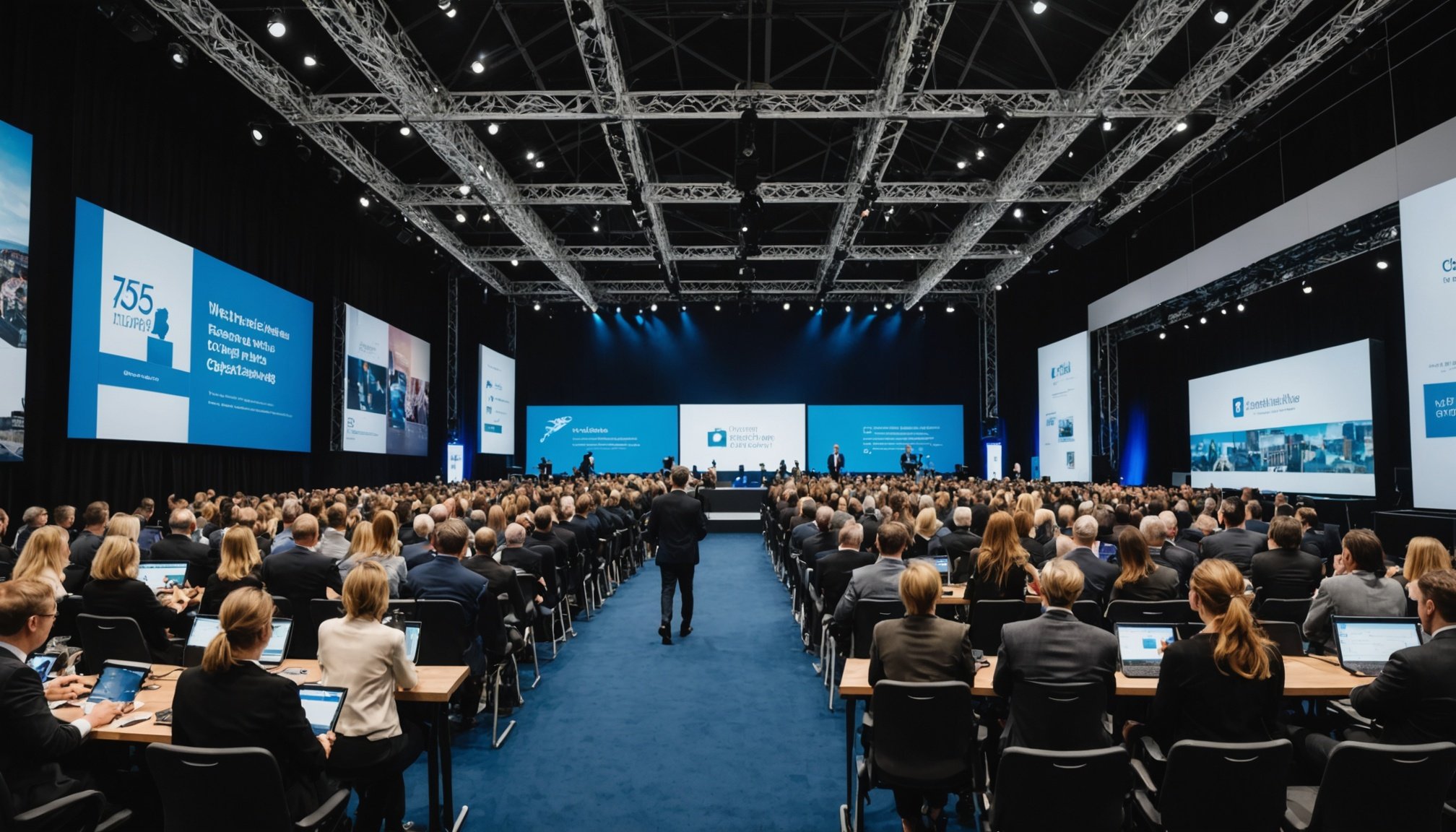Essential Tactics for Integrating Virtual and Hybrid Experiences
In the realm of hybrid event planning, UK event strategies are evolving to incorporate both in-person and virtual elements seamlessly. One essential tactic for event planners is to focus on creating an engaging experience that leverages the strengths of both formats. This could involve using advanced technologies to provide interactive features for virtual participants, ensuring they feel as immersed as those attending in person.
Furthermore, event planners should prioritise seamless communication between virtual and live attendees. This can be achieved by implementing robust streaming systems and interactive platforms that facilitate real-time interaction. By doing so, they can ensure that a hybrid event runs smoothly and efficiently, maximising participant engagement.
Topic to read : Proven tactics for uk retailers to reduce product returns effectively
The adoption of a hybrid model presents significant benefits in today’s landscape. Primarily, it allows for increased reach, enabling more attendees from diverse locations to participate without geographical constraints. Additionally, it offers flexibility for attendees to choose their preferred mode of participation, enhancing overall satisfaction.
To conclude, blending in-person and virtual elements through strategic planning can deliver innovative and highly engaging events. By embracing these approaches, UK event planners can adapt to the evolving needs of audiences, ensuring success in the dynamic world of events.
In parallel : Unveiling the latest breakthroughs in sustainable packaging solutions for uk consumer products
Case Studies of Successful Hybrid Events
Exploring successful hybrid events in the UK offers valuable insights into what makes these gatherings a triumph. A compelling example is the London Tech Week, which seamlessly blended in-person and virtual experiences, drawing an increased global audience. The event planning success was attributed to meticulous scheduling, enabling both physical and online attendees to partake interactively.
Wimbledon 2022 also stood out as a hybrid event exemplar. By offering real-time virtual matches and interactive sessions with players, it expanded its reach beyond the traditionally present crowd. This widened accessibility ensured that sports enthusiasts worldwide could engage with the event, illustrating the potential of hybrid formats to both scale and innovate.
Key factors contributing to these successes included robust technology infrastructure and a focus on engaging content. For instance, implementing user-friendly platforms enhanced participation and enriched the audience’s experience. Whether through sophisticated streaming services or interactive Q&As, maintaining a seamless digital interface was pivotal.
Drawing from these successful case studies, future planning should emphasize flexibility and inclusivity. Event organizers are encouraged to prioritize creating adaptable setups that cater to diverse audiences—both local and virtual. These insights not only inspire but also demonstrate strategies that can be tailored for varying scales and themes in the hybrid event landscape.
Tools and Technologies for Integration
Navigating the fast-paced world of hybrid events requires an arsenal of the right event technology. This ensures a seamless experience for all participants.
Recommended Software Solutions
When exploring virtual platforms, it’s essential to focus on user-friendly interfaces that offer robust interaction capabilities. Solutions like Zoom and Microsoft Teams have become staples due to their reliability and extensive feature sets designed for hybrid tools integration. They provide chat options, breakout rooms, and co-hosting functionalities, enabling immersive experiences.
Essential Hardware for Hybrid Events
To complement software choices, having the right hardware is equally vital. Devices such as high-definition cameras and microphones are crucial for transmitting clear audiovisuals. Reliable internet connectivity also supports the fluidity of virtual interactions, ensuring participants remain engaged without interruptions.
Features to Look for in Integration Tools
Key features to prioritise in integration tools include adaptability and scaling options. These tools should offer seamless transitions between physical and digital elements, enhancing the coherence of the hybrid event. Look for:
- Multistreaming capabilities to reach various platforms.
- Real-time analytics to understand participant engagement.
- Customisation options to tailor the event experience.
These features collectively foster a more dynamic and interactive hybrid event, ensuring that all attendees—virtual or in-person—receive optimal value.
Strategies for Audience Engagement
Effective audience participation is crucial for successful events. It involves innovative techniques that enhance both online and in-person attendee engagement. One effective strategy is using real-time feedback. By implementing tools that enable instant responses, organisers can maintain high levels of interactivity in events.
Gamification is another powerful method. By incorporating game-like elements, such as points and leaderboards, into an event, it motivates attendees to engage actively. This approach has proved effective in driving deeper engagement by tapping into competitive instincts and enhancing learning experiences.
In enhancing attendee engagement, leveraging social media is indispensable. Social media platforms can be used to create a continuous loop of interaction, even before the event starts. Utilising these platforms to share updates, conduct polls, and encourage discussions can create excitement and build a sense of community among participants.
Techniques fostering interaction between online and in-person participants include hybrid networking spaces. These spaces can facilitate conversations between different attendee groups, ensuring that everyone feels connected and involved. Creating opportunities for both digital and physical attendees to participate in Q&A sessions, discussion panels, or small group activities can further enhance audience participation. Implementing these strategies will effectively bridge the gap between virtual and physical event experiences.
Challenges and Solutions in Hybrid Event Planning
In organising hybrid events, planners often face unique planning challenges that require innovative problem-solving strategies. A prevalent difficulty is ensuring seamless interaction between in-person attendees and remote participants. This requires advanced technology which, if not executed properly, can lead to hybrid event difficulties such as connectivity issues or delays.
To address these challenges, contingency planning becomes vital. Strategising alternative solutions ensures that the event runs smoothly even if technical difficulties arise. Incorporating multiple internet connections and having a dedicated technical support team on site can mitigate risks.
Another common hurdle is customising content to engage both onsite and online audiences effectively. This necessitates enhanced flexibility in programming. Offering interactive elements that cater to participants’ preferences, such as live polls or Q&A sessions, can maintain engagement levels across the board.
Moreover, planners must manage logistics for both physical and virtual components simultaneously, which often demands heightened organisational skills. A solution lies in adopting sophisticated event management software that can streamline tasks.
Overall, being prepared for unexpected situations and having flexible plans significantly enhances the quality and success of hybrid events. Each challenge presents an opportunity for creative solutions, enabling planners to deliver memorable and engaging experiences for all participants.
Current Trends in the UK Event Industry
The UK event landscape is experiencing significant evolution, particularly with the adoption of hybrid events. The balance between virtual and in-person experiences is being shaped by both attendee preferences and technological advancements. As we move beyond the pandemic, there’s a notable shift towards creating events that are both comprehensive and adaptable.
Attendees now expect events to offer the flexibility and convenience found in virtual gatherings, combined with the engaging, interactive experiences of in-person participation. This demand is redefining event industry trends, as organizers strive to meet these new standards by investing in robust digital platforms and seamless in-person operations.
Technology is at the forefront of these evolving event practices. Innovations such as augmented reality, AI-driven analytics, and virtual reality are enhancing attendee interaction and satisfaction. These tools provide real-time feedback, allowing for dynamic event modifications and personalized experiences that cater directly to individual preferences.
In summary, the future of the UK event landscape hinges on leveraging technology to seamlessly blend physical and digital realms, ensuring that every event is not only memorable but also tailored to the unique expectations of each attendee. This strategic integration marks the next phase of growth within the industry.
Best Practices for Seamless Hybrid Execution
Navigating the complexities of hybrid events can be challenging. However, with the right strategies, it can also be incredibly rewarding.
Pre-Event Planning Essentials
In the initial stages of hybrid event planning, establishing clear objectives is crucial. Precisely define what you aim to achieve, whether it’s increased engagement or enhanced accessibility. Tailor your event to offer both in-person and virtual attendees equivalent experiences. Integrating interactive technologies such as polls and Q&A sessions can bridge the gap between the two audiences. Collaborate with a reliable tech team to ensure that all systems work effortlessly from the outset. Also, consider time zone differences to accommodate a wider audience, ensuring maximum participation.
In-Event Coordination Techniques
During the event, seamless coordination is vital. Equip your team with tools designed for efficient communication between virtual and physical spaces. Assign dedicated coordinators to manage both online and in-person queries, keeping everything running smoothly. Implementing real-time feedback mechanisms can also provide immediate insights into attendee satisfaction, allowing adjustments on the go.
Post-Event Follow-Up Strategies
After the event, effective follow-up strategies maintain momentum. Gather feedback through surveys to identify what worked well and areas needing improvement. Continuing the conversation post-event fosters a community feeling and keeps participants engaged. Prioritise thanking attendees to build lasting relationships for future events.











